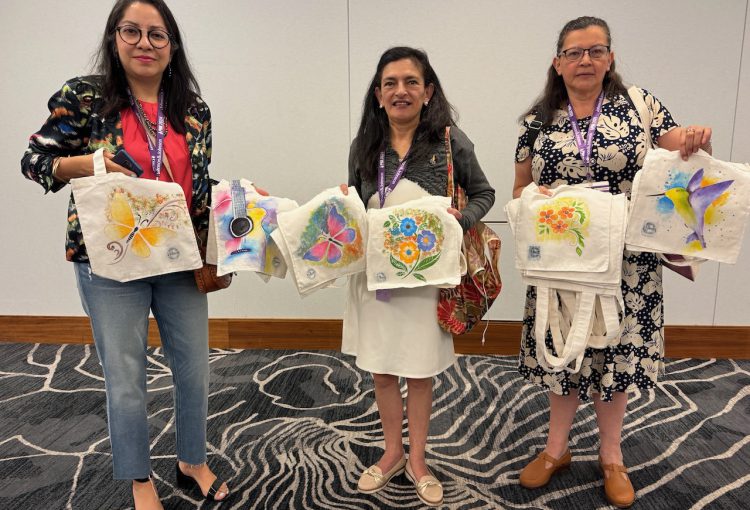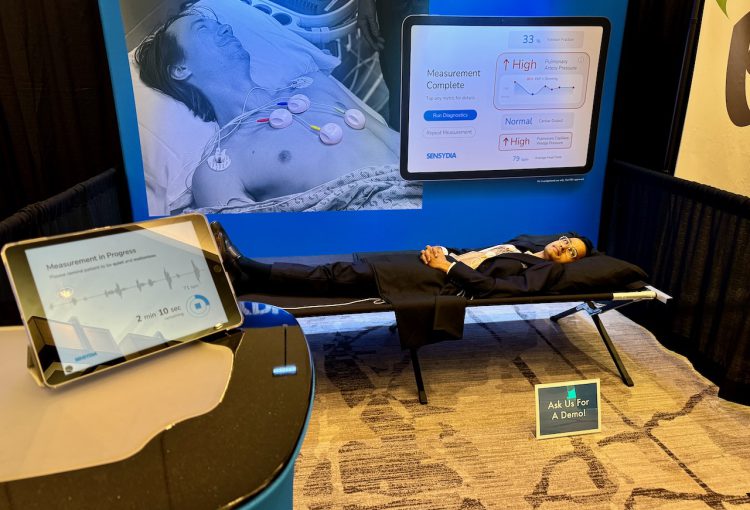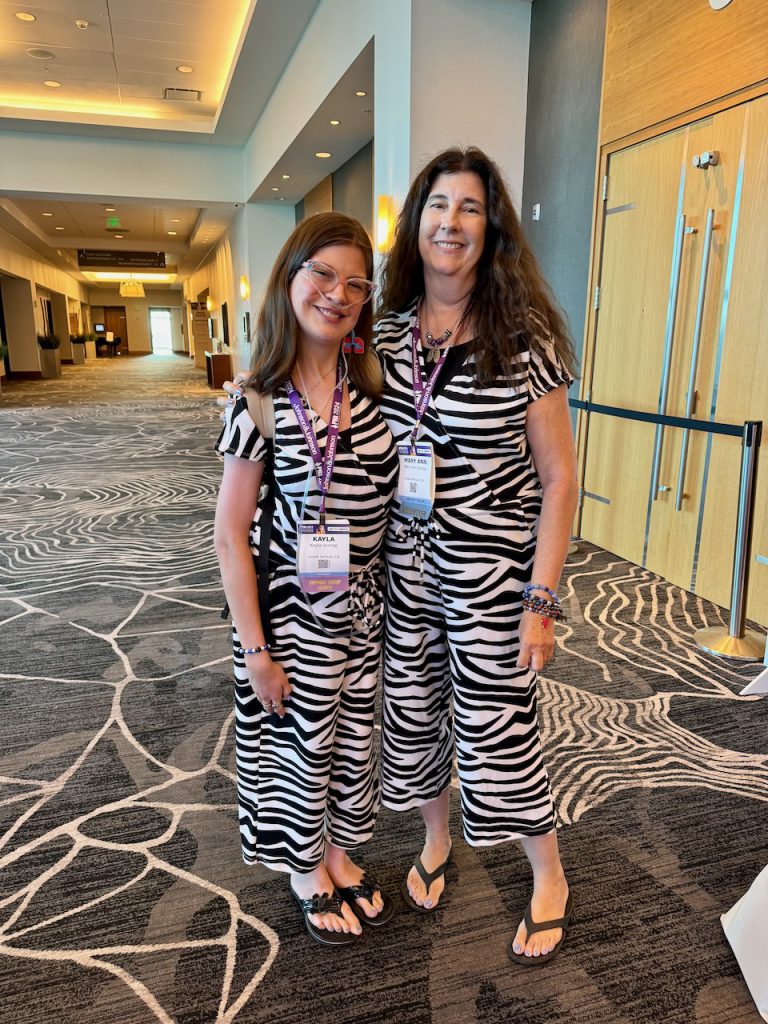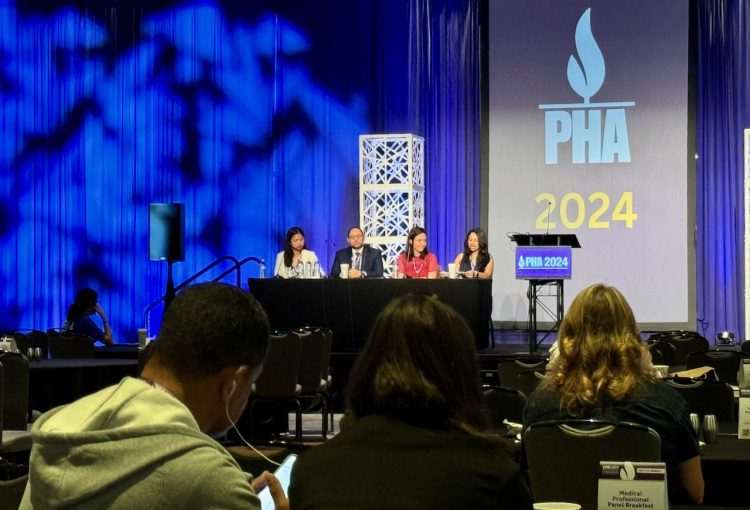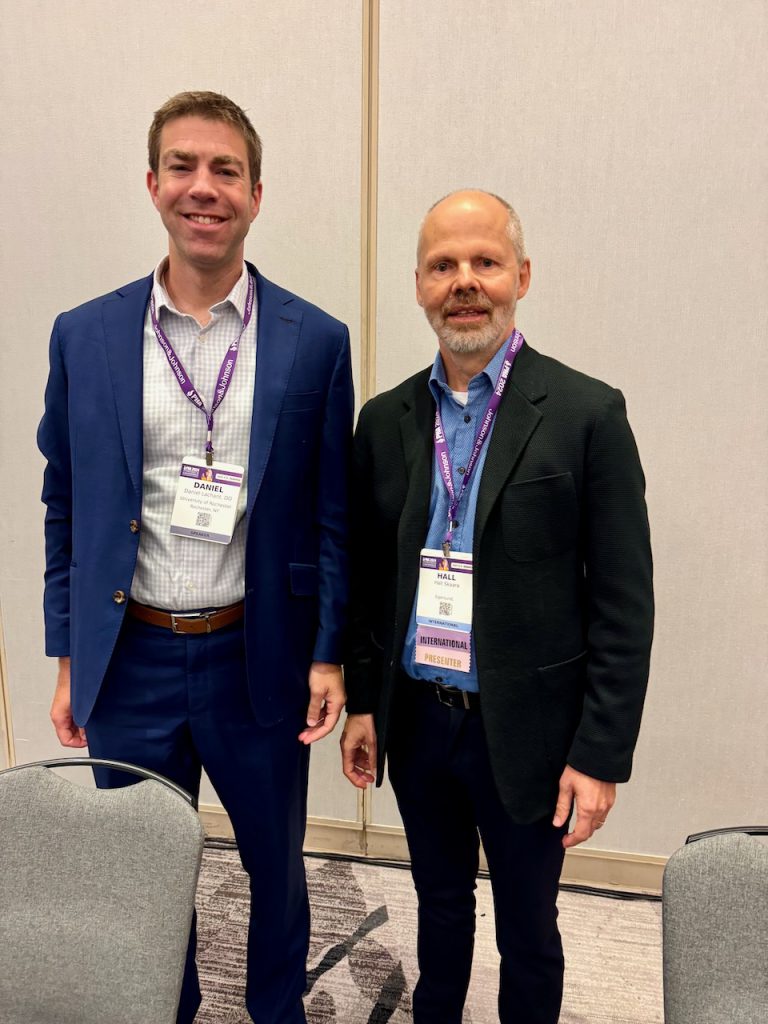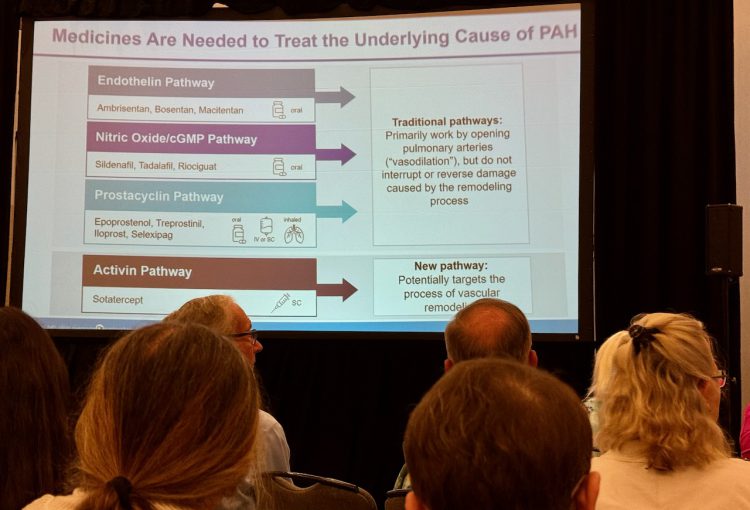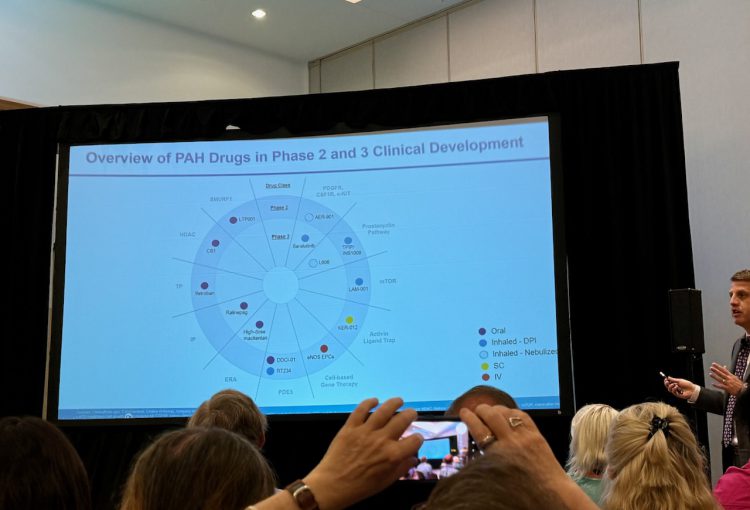Report from the International PHA conference
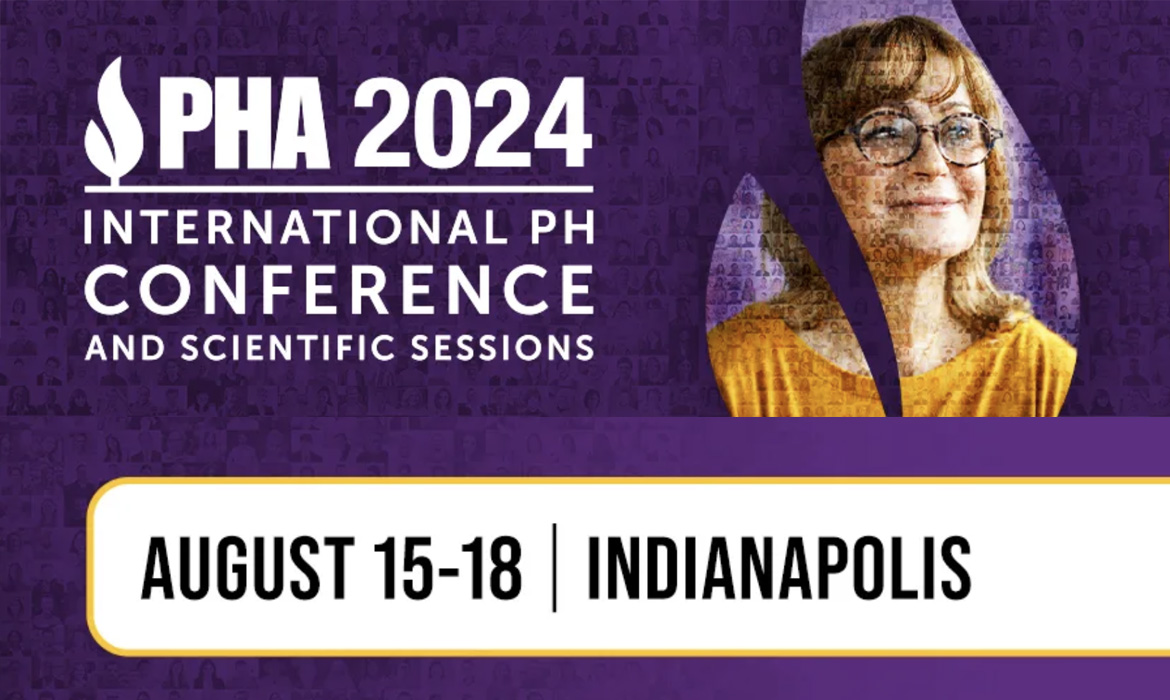
Intro
PHA recently held its 15th international PH conference in Indianapolis, Indiana. This gathering brought together a diverse group of about 1100 healthcare professionals, researchers, patients, and advocates from around the world, all united by a shared commitment to advancing the understanding and treatment of pulmonary hypertension.
International community
All international participants were invited to a reception on the evening before the first day of the conference. PHA President Matt Granato delivered a brief welcome speech, emphasizing the importance of collaboration across national borders. Following his remarks, representatives from different regions around the world shared the main challenges they face and the strategies their associations are implementing to address them. I had the honor of representing PHA Europe at the meeting, where I discussed the diverse challenges we encounter across Europe. I specifically highlighted our Call to Action document and outlined the five key action points it contains. You can access PHA Europe’s Call to Action document here.
Scientific sessions
The participation of both Health Care Professionals (HCPs) and patients at the conference fosters a strong connection and encourages collaborative efforts. This inclusive environment also allows informed patients to attend sessions originally designed for HCPs. Having lived with PH for 19 years, I’ve accumulated enough experience to follow these sessions quite well. During the conference, I participated in several such sessions and found them to be highly beneficial.
One notable session was a joint presentation by PHA and PVRI titled “The Real-World Evidence in PAH.” The presenters highlighted the differences between traditional randomized clinical trials (RCTs) and real-world data (RWD). The challenge with RCTs is the need to generalize results to larger, more diverse populations, whereas RWD, derived from large registries, naturally reflects this diversity. While RCTs are essential for bringing a drug to market, RWD provides valuable insights into the long-term effects of treatments on patients.
Another insightful session, “Role of the PHA Registry and PH Care Centers: 2024 Data Review and New Accreditation Criteria,” provided an overview of the PHAR registry and the PHA accreditation process. The PHAR, consisting of 3,099 entries from 71 participating PH Centers, includes data on demographics, clinical information, quality of life (QoL), PAH treatment, and more. To date, this registry has contributed to 50 research projects, four ancillary studies, numerous conference abstracts, and 17 publications. For example, an early study from the registry found that blood-thinning medication had no impact on survival in patients with Pulmonary Arterial Hypertension. The session also discussed the goals of the PHA accreditation process, which include:
- Increasing access to care
- Facilitating earlier diagnosis
- Improving patient outcomes
- Raising the quality of care
- Promoting PH care standards
- Enhancing professional expertise
- Expanding the patient registry
Another session explored whether disease-modifying medications are currently available for PH patients. The presenter began by defining a disease-modifying medication as a drug or therapy that, according to the EMA, can alter the underlying pathophysiology of a disease, thereby slowing its progression, delaying the onset of complications, or potentially changing the course of the disease. The presenters concluded that existing medications for PH do not fully meet these criteria. However, the introduction of Sotatercept suggests we may be entering a new era in PH treatment, potentially allowing us to classify it as a disease-modifying drug. Despite challenges in proving this classification due to the difficulty in obtaining lung biopsies, the panel and audience agreed that the most important factor is the significant positive impact this drug appears to have on PH patients.
Another session focused on novel therapies in PH, and for the first time in many years, I once again heard discussions about gene therapy as a potential treatment for the disease. A scientist presented early findings from a phase one study he is involved in, indicating that the gene therapy under investigation is not only safe but also shows promising effects on the disease. The upcoming phase two trial will be crucial in confirming these initial results.
There were several other interesting HCP sessions, but I couldn’t attend them all. Fortunately, all sessions were recorded, and the recordings will be available on PHA’s website later. Four of the key sessions will also shortly be available at our Bel Air Center. They will be added to PHA’s booth and to the «recorded presentations» room.
Patient sessions
There were also several engaging sessions specifically designed for patients and caregivers, including sessions tailored for newly diagnosed individuals. I had the opportunity to present during one of the patient sessions titled “Men’s Health and Wellness.” It’s important to note that men are underrepresented as PH patients, making a dedicated session for men particularly valuable. (There was also a session exclusively for women, by the way.) In my session, I was joined by Dr. Daniel Lachant. I presented my personal survival guide, which I have developed over the years, while Dr. Lachant provided the scientific basis for the various strategies I discussed and answered medical questions from the male audience.
For those interested, I’ve made my survival guide presentation available at PHA Europe’s Bel Air Center. You can create a free account at belaircenter.info and access the recorded presentation room to view it.
Pharmacy sessions
There were also sessions sponsored by the pharmaceutical industry, featuring presentations about their products. Interestingly, these presentations were not delivered by industry representatives themselves but by independent healthcare professionals, ensuring a more objective perspective.
I attended two of these sessions. The first, hosted by United Therapeutics, provided information about their drug Tyvaso, which is available as a Dried Powder Inhaler (DPI). It was approved by the FDA in 2021 (approval by the EMA is still pending). This medication can be used by both PAH patients and those with PH ILD (Interstitial Lung Disease), a particularly serious and challenging group to treat due to the lack of other approved drugs specifically targeting this condition. Tyvaso DPI is administered four times a day, with a target dose of 9 to 12 breaths. The medication enters the bloodstream within ten minutes and appears to be both safe and well-tolerated, with the most common side effect being coughing.
The second session I attended was sponsored by Gossamer Bio, a biotech company specialising in Pulmonary Hypertension with which PHA Europe has a strong working relationship. The session was excellently presented by Dr. Kingrey and one of his patients, living with Pulmonary Arterial Hypertension, who is currently using Gossamer Bio’s drug investigational drug seralutinib. Seralutinib works through a novel mechanism known as the Tyrosine Kinase pathway. (Gossamer Bio has a booth in our Bel Air Center with an excellent video, subtitled into several languages, that explains this pathway.) The phase two study (TORREY) was recently completed with impressive results, and enrolment in the phase three study (PROSERA) is currently underway. (The PROSERA website www.proserastudy.com is available in some countries with more to follow later in the year.) Seralutinib is administered using a small, hand-held dry powder inhaler, allowing the drug to be delivered directly into the lung vessels, which helps minimize potential side effects elsewhere in the body. The patient gave a touching testimony about living with PH and reported experiencing no side effects from seralutinib, expressing great satisfaction with its effects.
There was also a session specifically focused on the new drug Sotatercept by Merck (known as MSD in Europe). Unfortunately, this session was only open to healthcare professionals.
Research room
It’s not often that so many PH patients gather in one place, and scientists take advantage of this opportunity by inviting patients to participate in research studies. Eager to contribute, I was ready to enrol in all ten studies offered. However, I was excluded from some of them for various reasons — some, for instance, were only open to U.S. citizens. Interestingly, in one of the studies, I discovered that I had already enrolled back in 2010. Although I had no recollection of this, the scientist remembered my name from 13 years ago when I signed up at the PHA conference in 2010. Quite impressive!
In one of the studies, I will be wearing a Fitbit watch for a period of 12 weeks at intervals over the next three years. The device will automatically record my steps and send the data to the research center. The goal of the study is to determine whether physical activity levels influence the quality of life (QoL) or survival rates among PH patients. As a strong advocate of physical activity for patients, I’m thrilled to be part of this study. So far, my average step count is around 10,000 steps a day, making me a fairly active PH patient.
On the last day of the conference, the official conference video was released. To my surprise, I was featured in it—a short clip showed me talking to the research representatives.
Enjoyment
The conference offers an excellent opportunity for networking with fellow PH patients, international leaders, and healthcare professionals. It also includes several enjoyable sessions, with the highlight being the fashion show. This event is a humorous and low-key affair, featuring PH patients in a variety of costumes and outfits designed to conceal their pumps. The most heartwarming and emotional part of the show is always the participation of PH children, who proudly wal —and sometimes dance or run—down the runway. It’s both touching and bittersweet to see these children, who should have their whole lives ahead of them, affected by the same disease as me. However, I am hopeful that current and future treatments will help them achieve a normal lifespan. It was particularly inspiring to see a woman who has lived with PH for 48 years confidently walking the runway.
Conclusion
The 15th International PHA Conference in Indianapolis was a remarkable event that highlighted the importance of global collaboration in the fight against pulmonary hypertension. The diverse sessions, ranging from cutting-edge scientific presentations to patient-focused discussions, provided invaluable insights and reinforced the strong bonds within the PH community. The relationship between PHA and PHA Europe continues to thrive, exemplified by our joint efforts to advance care, research, and advocacy for PH patients worldwide. As we look to the future, the shared commitment and partnerships formed at this conference will undoubtedly drive further progress in improving the lives of those affected by PH.
Hall Skaara
Project Manager
Vienna, August 22nd, 2024




